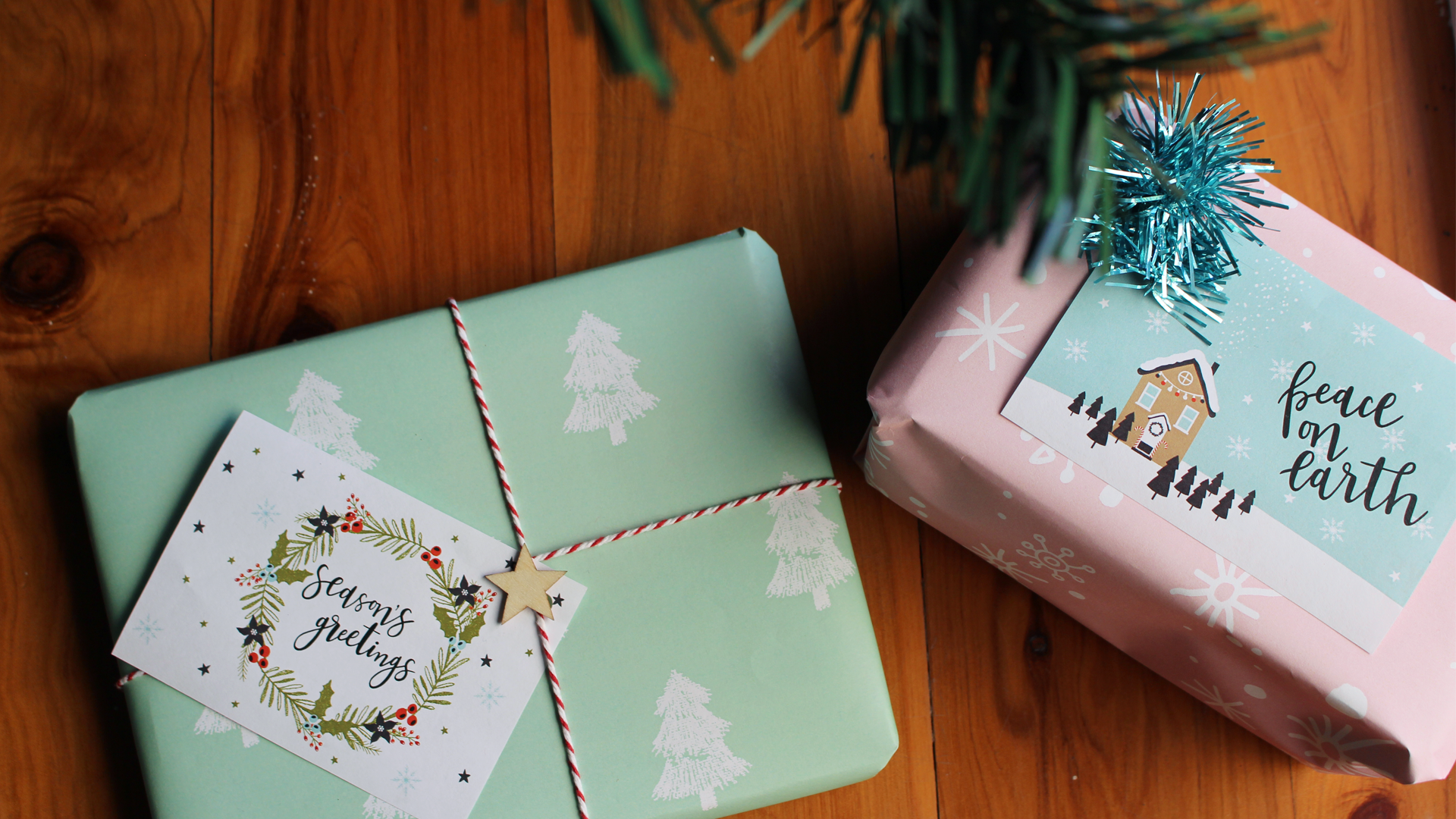
25 Nov 5 reasons I always get children picture books for Christmas
Children who love being read to are more likely to find learning to read easier. That’s why I always get picture books for Christmas gifts! writes Kym Simoncini
Christmas is just around the corner. If you’re wondering what to get your child, your friends’ children, your nieces, nephews or basically any very young person in your life – I highly recommend picture books.
Many people can remember a favourite book when they were a kid. Some of my favourites were the Berenstain Bears with Papa Bear trying, unsuccessfully, to teach his children how to ride a bike or gather honey.
Sadly, a 2011 report from the UK showed the number of young people who say they own a book is decreasing. The report also showed a clear relationship between receiving books as presents and reading ability.
Children who said they had never been given a book as a present were more likely to be reading below the expected level for their age.
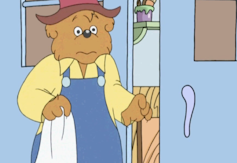
The Berenstain Bears/Screenshot
There are lots of benefits of reading aloud to young children, including developing children’s language and print awareness. These include knowing that the squiggles on the page represent words, and that the words tell a story.
Such knowledge gives children a head start when they go on to reading at school.
1. Reading to kids increases their vocabulary
Research shows books have a greater variety of words than conversations. But it also suggests the conversations had during reading matter most.
Adults should discuss ideas in books with children, as they occur, as opposed to just reading a book from start to finish. Talking about the pictures, or what has happened, can lead to rich conversations and enhance language development.
The more words you know, the simpler it is to recognise them and comprehend the meaning of the text. Children who read more become better readers and more successful students.

shutterstock.com
2. Books can increase children’s maths and science skills
Picture books show children maths and science concepts through a story, which helps kids grasp them easier.
Some books (like How Many Legs and How Big is a Million) explicitly explore concepts such as numbers. Other stories, like the Three Little Pigs, have concepts embedded in them. Children can learn about the properties of materials when adults talk about the strength of hay, sticks and bricks.
A study in the Netherlands found kindergarten children who were read picture books, and engaged in discussions of the maths concepts in the books, increased their maths performance, compared to a control group of children who weren’t read these books.
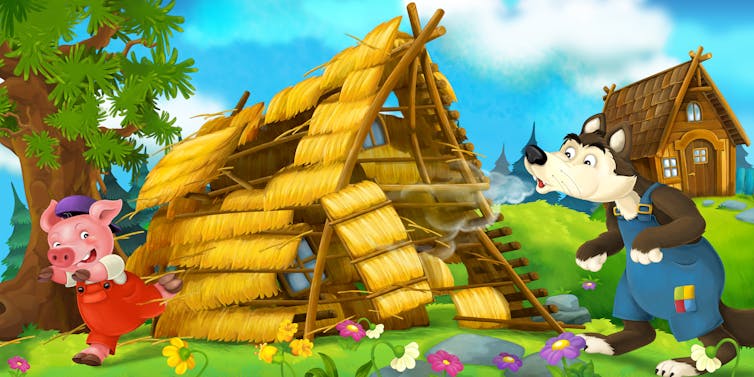
shutterstock.com
Early Learning STEM Australia has created a STEM-Booklist which gives parents and teachers ideas for books that contain STEM (science, technology, engineering and maths) ideas. These include:
- They All Saw a Cat, which shows the perspectives of different animals
- Lucy in the City, where a cat loses her way home and an owl helps her
- Dreaming Up, which contrasts children’s constructions with notable works of architecture.
3. Books are mirrors and windows
Nearly 30 years ago, children’s literature professor, Rudine Sims Bishop, wrote how books can be windows, through which we see other worlds. These windows can become sliding doors when we use our imaginations and become part of them.
Books can also be mirrors, when we see our own lives and experiences in them. In this way, they reaffirm our place in the world.
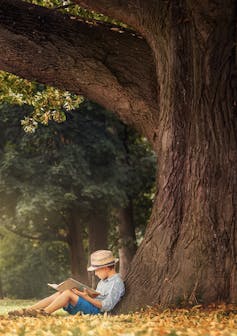
shutterstock.com
Children need both types of books to understand people come from different cultures and have different ways of thinking and doing things. Books can show that children of all cultures are valued in society.
Children who never see themselves represented in books may feel marginalised. Unfortunately, the majority of books feature white children or animals, so many children only experience books as windows.
Examples of books that show the lives of Indigenous children include Big Rain Coming and Kick with My Left Foot (which is also a great book about left and right).
4. Books can counter stereotypes
Children learn gender stereotypes from a very young age. Research shows by the age of six, girls are already less likely than boys to think girls are “really, really smart” and they begin to avoid activities thought to be for “really, really smart” children.
Picture books can challenge these and other stereotypes. Reading books that portray atypical behaviours such as girls playing with trucks or with girls in traditional male roles such as being doctors, scientists or engineers, can change children’s beliefs and activities.
Iggy Peck, Architect; Rosie Revere, Engineer; and Ada Twist, Scientist are very popular. And Sofia Valdez, Future Prez has just been released.
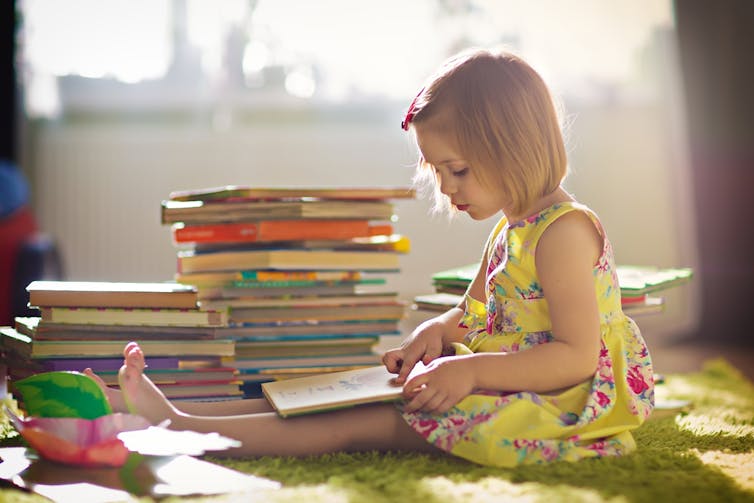
shutterstock.com
The City of Monash in Melbourne has list of children’s picture books that promote gender equality and challenge gender stereotypes. This includes one of my favourite books, The Paperbag Princess, who saves herself from a dragon and decides not to marry the prince after he complains she is a mess.
5. Just having more books makes you more educated
A study that looked at data from 27 countries, including Australia, found children growing up in homes with many books got three years more education than children from bookless homes. This was independent of their parents’ education, occupation and class.
Adults need to model good reading habits and their enjoyment of reading. Giving children a love of reading can be the best present we ever give.
Kym Simoncini, Associate professor Early Childhood and Primary Education, University of Canberra
This article is republished from The Conversation under a Creative Commons license. Read the original article.

